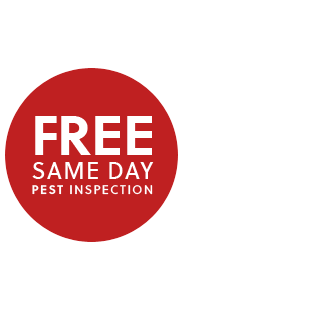Winter pest exclusion tips
Winter’s cooler temperatures and increased rainfall means that pest pressure on the exterior of your home will likely change – and not for the better.
Pests do not like the cooler and wetter weather any more than humans do. Rodents, cockroaches, spiders, and such occasional invaders as boxelder bugs will make their way indoors as temperatures drop and outdoor food sources become scarcer.
Unfortunately, these pests’ prime target could be your home as they ride out the winter. Your residence offers them everything they need to survive – food, water (in the right amounts), and shelter from the elements.
Foraging pests will take advantage of any opening in a wall, door, window, or roof line to enter a home and settle in. The size of the opening doesn’t have to be significant to allow them access; mice only need an opening the size of dime to gain access to the interior of your home.
Once inside your home, these unwanted guests can contaminate food, spread disease, and cause structural damage and hazards. Did you know that a leading cause of electrical fires in homes is a result of rodents chewing on wiring in wall voids?
Protect your home
Clark, your friendly pest, mosquito, termite, and grounds care expert, says that your best line of defense against pests is to deny them access in the first place. A well-thought-out pest exclusion plan will keep those unwanted pests on the outside looking in.
What does a pest exclusion plan include? Start by using caulk, steel wool, screening, heavy duty seals, and other suitable materials to fill openings on the exterior of your home to seal your home off from pests.
A successful pest exclusion plan will also include storing leftover food properly, cleaning up food spills, and cleaning up the yard to remove conditions conducive to attracting pests.
A pest exclusion checklist includes the following:
- Screening attic vents, openings to chimneys, and any other areas that are open to the outdoors, such as mail slots and animal doors.
- Replacing weatherstripping and repairing loose mortar around the foundation and windows.
- Don’t forget the roof, as rodents, squirrels, and other pests will take the high road to find a spot to get inside.
- Keeping attics, crawl spaces, and storage sheds well ventilated and dry. Consider using a dehumidifier in these areas.
- Keeping kitchen counters clean, storing food in airtight containers, and disposing of garbage regularly in sealed receptacles.
- Carefully inspecting boxes of holiday decorations (wreaths are an ideal hiding spots for spiders and other pests), package deliveries from your online holiday shopping, and grocery bags for evidence of pests before bringing them indoors.
- Avoiding the leaving of pet food bowls out for long periods of time, as pet food is a highly desired meal for rodents.
- Removing any yard debris around the foundation or near your home. The debris can serve as a home to pests and place them closer to exterior access points.
An ounce of prevention goes a long way in keeping pests out, and it’s far less expensive to invest the time and money in exclusion methods than it is to remove pests once they get indoors.
Pest exclusion for your home: call Clark
Call or text California’s trusted, friendly pest control expert at (800) WE-NEED-YOU (936-3339) or email us at clarkcares@clarkpest.com to schedule your home for pest exclusion assessment.
Until next time, the pest management professionals at Clark Pest Control thank you for helping to keep unwanted pests out of your home and yard.


